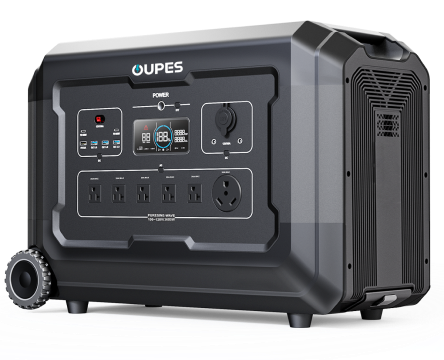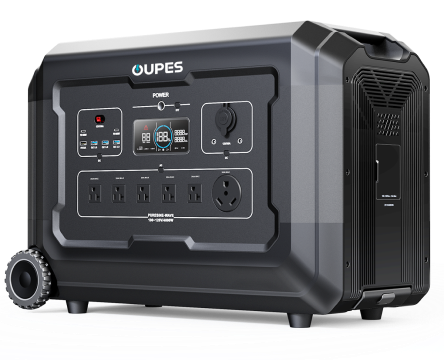In the realm of domestic utility, myriad fan types serve distinct purposes. Your abode might feature an array of these, from ceiling fans to those embedded within various devices for cooling, alongside exhaust variants.
Given their extensive operational periods, these fans invariably escalate electricity usage. Thus, the query arises: what quantum of wattage do these fans necessitate? Unraveling this enigma is pivotal in curtailing your electrical expenditure.
The electrical appetite of a fan is contingent upon several variables, including its dimensions, the motor's characteristics, and duration of activity. Moreover, fans are not a monolith; their energy consumption profiles vary significantly. In our discourse, we shall delve into the following queries:
- The wattage requisites of a ceiling fan.
- The energy demands of a box fan.
- The power consumption of a 20-inch box fan.
- The electrical usage of a pedestal fan.
Key Takeaways About Fan Wattage
On average, a fan consumes 39.3 watts when set to high and approximately 6.9 watts on the low setting. If the fan operates for 12 hours daily, this amounts to an average energy usage of around 471 watt-hours (Wh).
Utilizing an OUPES solar generator can lead to significant energy and cost savings. These generators are not only cost-effective but also operate quietly, enhancing your overall experience.
How Many Watts Does A Fan Use?

In this discourse, we shall delve into the electrical consumption, measured in watts, of various ventilating devices. It is pivotal to acknowledge that the power requisites of these devices vary significantly, influenced by several determinants. These include:
- The marque of the fan
- The fan's circumference and overall dimensions
- The volume of air circulated
- The velocity at which this air is propelled
- The number of rotations executed per minute
- The habitual duration of the fan's operation
Fan Watts Consumption
|
Fan |
Wattage |
Estimated Working Hours (Hours) |
Estimated Power Needed daily (Watt-hours) |
|
Ceiling Fan |
33W |
12 |
396 |
|
Box Fan |
100W |
12 |
1200 |
|
Tower Fan |
54W |
12 |
648 |
|
Table / Standing Fan |
40W |
12 |
480 |
How Much Power Does a Ceiling Fan Use?
In our discourse, the electrical consumption of a ventilator is contingent upon its dimensions, velocity, and the engine's efficacy. This axiom is equally applicable to rotatory ceiling ventilators.
A ceiling ventilator of intermediate size expends approximately 31.1 watts at its zenith speed and a mere 3.6 watts at its nadir. Nonetheless, the most frequently observed mean wattage is 33W. The apex wattage for a ceiling ventilator is typically around 99.8 watts.
What Size Generator Do I Need for Fan When Off-Grid?
In the realm of autonomous energy solutions, solar generators emerge as the paramount choice for energizing ventilators during electrical disruptions and in locales detached from the grid.
The preeminent rationale for advocating solar generators lies in their independence from fossil fuels, thus eliminating fuel expenditures. These devices harness the sun's bountiful and gratuitous rays. Moreover, their operation is characterized by tranquility, absence of exhaust, and minimal upkeep, rendering them effortlessly manageable.
Contemplating the appropriate magnitude of generator for ventilators in off-grid scenarios? This hinges on your fan's energy demands, a topic previously explored. Determining your fan's wattage and habitual operational duration enables you to ascertain the requisite generator size.
For powering solely ventilators or diminutive gadgets, the OUPES 600 Portable Power Station stands as the optimal selection. Its attributes include portability, economical value, and the capacity to energize a plethora of devices concurrently, courtesy of its diverse port offerings.
Best Solar Generator for Fan When Off-Grid
OUPES's solar energy harvesters span a diverse spectrum of dimensions. This range encompasses compact, economically viable variants tailored for minor gadgets, as well as voluminous, high-capacity units capable of energizing a plethora of apparatuses, including but not limited to, air cooling systems, televisual devices, and laundry machines.
Best for Portable- OUPES 600 Portable Power Station

OUPES 600 Portable Power Station is designed for those who demand both efficiency and mobility. With a substantial 595Wh capacity and 600w output. The built-in ergonomic handle design makes it easy to lift and move with just one hand.
Only weighs 14 lbs, it's designed for easy transport, making it an ideal companion for camping trips, and outdoor events, or as a backup power source at home.
Best for Most Appliances- OUPES Mega 5 Home Backup & Portable Power Station

The OUPES Mega 5 boasts a substantial 5040Wh capacity, this unit is equipped with a robust 4000W AC pure sine wave inverter that can power 99% of electrical appliances. At the heart of this system lies a high-quality LiFePO4 battery, renowned for its longevity and durability.
Designed for versatility, it features 16 different outputs, allowing you to power multiple devices simultaneously. Whether it's for home backup, outdoor activities, or professional use, this unit is up to the task.
Best for All Situation - OUPES 2400 Portable Power Station

OUPES 2400 Portable Power Station boasts a substantial 2232Wh capacity and 2400W output power, Featuring five robust 2400W AC ports, this power station can simultaneously power multiple devices, making it an ideal companion for outdoor adventures, work sites, or emergency backup.
Designed to power 95% of household appliances, this power station is your go-to solution for reliable off-grid power, emergency backup, or mobile energy needs.
FAQ about Fan Wattage
How much electricity does a fan use in 24 hours?
The aggregate energy expenditure (Wh) is the product of the device's power draw in watts and the duration of its operation in hours.
Consider a scenario where a fan, drawing 33 watts, is operational for 12 hours. Here, the electrical consumption amounts to 396 watt-hours. Conversely, should the fan's power requirement be 75 watts, the resultant energy expenditure escalates to 900 watts, and the pattern continues accordingly.
How much Power does a fan consume?
The energy consumption of a fan hinges on its design, dimensions, engine potency, and operational duration. Typically, a ceiling fan expends about 33 watts, whereas a box fan demands 100 watts, and a tower fan's energy intake can vary.
How much electricity does a ceiling fan use?
An average ceiling fan expends between 15 and 90 watts of power, a figure that fluctuates in tandem with the velocity of its blades.
Conclusion
In our discourse, we've delved into the energy exigencies of various fan designs and the methodology for computing the electrical draw of your specific fan. Moreover, the most efficacious strategy to mitigate your energy expenditures is through the adoption of photovoltaic energy systems.
The OUPES Solar Generators, presenting a broad spectrum of options, ensure that you'll discover an apparatus within your fiscal parameters that satisfies your necessities.

































Leave a comment
This site is protected by hCaptcha and the hCaptcha Privacy Policy and Terms of Service apply.